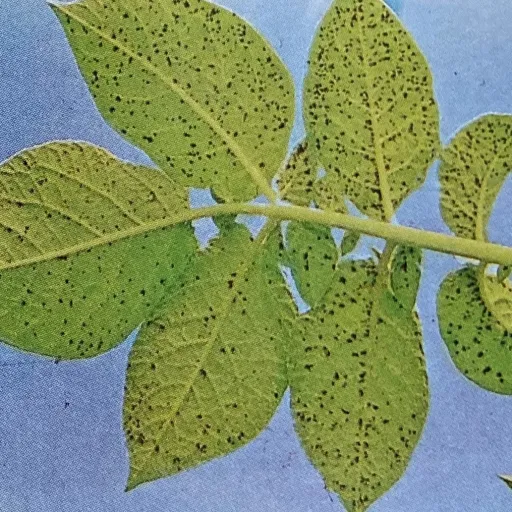Deficiencies
Potato Crop Deficiencies
Experiencing Potato Crop Deficiencies? The team here at Fielder Nutrition are experts in improving crop health and maximising yields. Get in touch with our team today.
Contact Us
Deficiency Type
Manganese Deficiency
Manganese is the most widespread micronutrient problem in the UK. Manganese is taken up by the plant roots but unlike magnesium is not very mobile. It is possible to find differences in susceptibility to manganese between different potato varieties. The first symptom of a deficiency in is an initial paleness in the younger leaves. This is followed by the appearance of blackish/brown spots along the veins and these are best seen on the underside of the leaves.

Deficiency Type
Mangesium Deficiency
In potatoes, Magnesium is very mobile and translocates easily from older to younger tissues. Deficiency appears as yellowing of the interveinal areas on the leaf. In severe cases it may result in stunting and premature senescence. Varietal differences have been observed and varieties with relatively few leaves may be the most susceptible. Potatoes are one of the crops most likely to show a yield response to magnesium as they tend to be grown on lighter land, so choosing the correct product is vital.

Deficiency Type
Potassium Deficiency
A lack of potassium may result in yield loss and quality effects without any visible deficiency symptoms. Where symptoms are identified, they generally appear at the leaf margins especially on older leaves. The leaves first become brown and then die prematurely. In severe cases, growth can become very retarded and the leaf canopy may not close between the rows. As a result the crop will look very uneven across the field. At this stage yield loss is likely to have occurred to an extent that it cannot be recovered by treatment.

Deficiency Type
Nitrogen Deficiency
Nitrogen deficiency in potatoes can lead to stunted growth. Yellowing of the older leaves gives rise to dieback and there are likely to be far fewer stems. The result of these symptoms is much lower yields unless action is taken.
